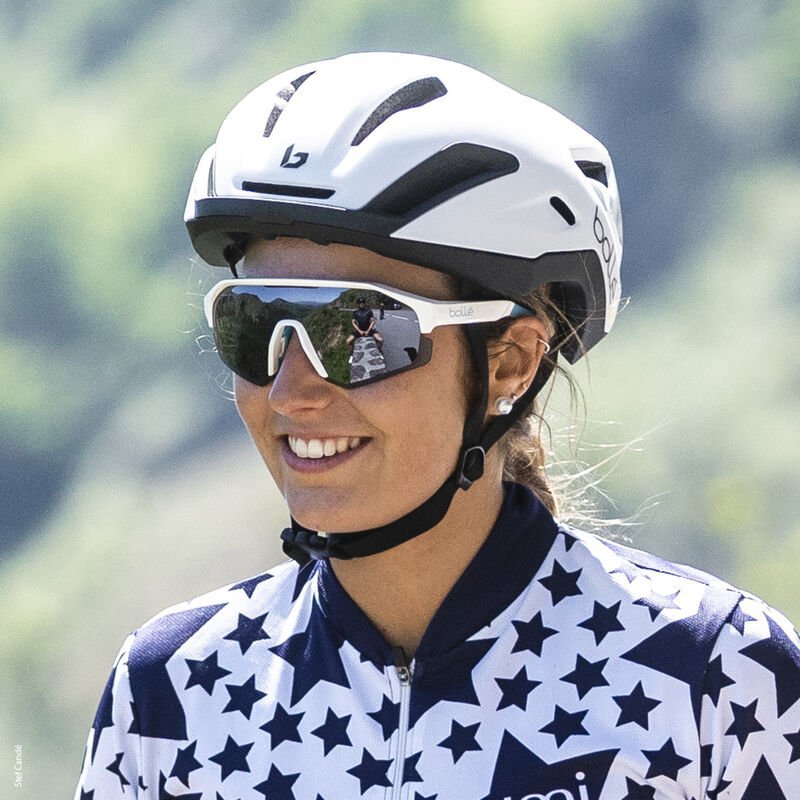I. The Importance of Bicycle Glasses

Cycling is an exhilarating and fast-paced activity that can take riders through various terrains and weather conditions. Bicycle glasses are not just a fashion statement; they play a vital role in protecting your eyes on the road and enhancing your overall vision and performance.
A. Protecting Your Eyes on the Road
When cycling, your eyes are exposed to a multitude of elements such as dust, debris, insects, and UV rays. Bicycle glasses act as a shield, protecting your eyes from these potential hazards and ensuring a clear line of sight. Additionally, they offer protection from wind, reducing the risk of eye irritation and fatigue, especially during high-speed rides.
B. Enhancing Vision and Performance
Clear, unobstructed vision is essential for safe and enjoyable cycling. Bicycle glasses are designed to enhance visual clarity and contrast, allowing riders to better navigate varying light conditions, such as bright sunlight, low-light, or overcast skies. Furthermore, certain lens technologies can improve depth perception, enabling cyclists to better judge distances and potential obstacles on the road. By enhancing vision, bicycle glasses contribute to overall performance, helping cyclists ride with confidence and precision.
II. Choosing the Right Bicycle Glasses
Selecting the right bicycle glasses is crucial for both eye protection and visual enhancement. Considering specific factors such as frame and lens material, as well as finding the correct fit, ensures that cyclists can fully benefit from their choice of eyewear.
A. Considerations for Frame and Lens Material
When choosing bicycle glasses, it’s important to consider the material of both the frame and lenses. Frames can be made from various materials such as lightweight and durable plastics, aluminum, or even titanium. Each material comes with its own set of advantages in terms of flexibility, weight, and durability. Similarly, lens materials can vary from polycarbonate, which offers impact resistance, to glass for exceptional optical clarity. Considering the intended use and environmental factors will guide the choice of material for both frames and lenses.
B. Finding the Right Fit for Comfort and Functionality
Comfort and functionality are paramount when it comes to bicycle glasses. The right fit ensures that the glasses stay securely in place during the ride, preventing slippage and discomfort. Adjustable nose pads and temple tips contribute to a tailored fit, catering to different face shapes and sizes. Additionally, optimal coverage and ventilation are essential for preventing fogging and ensuring breathability. Finding a balance between a snug fit and breathability is key to maximizing comfort and functionality while cycling.
III. Features to Look for in Bicycle Glasses

A. UV Protection and Polarized Lenses
One of the most important features to look for in bicycle glasses is UV protection. When you’re out on the road or trail, your eyes are exposed to harmful UV rays from the sun. Prolonged exposure to UV rays can lead to cataracts, macular degeneration, and other eye problems. That’s why it’s crucial to invest in bicycle glasses with UV protection to shield your eyes from these damaging rays.
In addition to UV protection, polarized lenses are another important feature to consider. Polarized lenses reduce glare and improve visibility, making it easier to see obstacles and hazards on the road or trail. This can be especially beneficial when cycling in bright sunlight or on reflective surfaces like water or pavement. Look for bicycle glasses with polarized lenses to enhance your vision and protect your eyes from glare.
B. Ventilation and Anti-Fog Coating for Clear Vision
Another crucial feature to look for in bicycle glasses is ventilation. When you’re cycling, it’s common for your body temperature to rise and cause sweat to accumulate around your face. Without proper ventilation, this sweat can fog up your glasses and obstruct your vision, posing a safety risk. That’s why it’s important to choose bicycle glasses with ample ventilation to prevent fogging and keep your vision clear.
In addition to ventilation, an anti-fog coating is another feature that can help maintain clear vision while cycling. Anti-fog coatings work to repel moisture and prevent fog from forming on the lenses, ensuring that your vision remains unobstructed throughout your ride. Look for bicycle glasses with anti-fog coatings to keep your vision clear and free from distractions caused by fogged-up lenses.
IV. Maintenance and Care Tips for Bicycle Glasses
A. Cleaning and Storing Your Glasses Properly
Proper cleaning and storage are essential for maintaining the performance and longevity of your bicycle glasses. Here are some tips for cleaning and storing your glasses effectively:
- Use a Gentle Cleaning Solution: When it’s time to clean your bicycle glasses, avoid using harsh or abrasive cleaners that can damage the lenses or frame. Instead, opt for a gentle cleaning solution, such as a mild dish soap diluted in water, to remove dirt, sweat, and residue from the glasses.
- Use a Microfiber Cloth: When drying your glasses after cleaning, use a clean, soft microfiber cloth to gently pat them dry. Avoid using paper towels or rough fabrics, as they can scratch the lenses and compromise their clarity.
- Store Them in a Protective Case: When you’re not using your bicycle glasses, store them in a dedicated protective case to shield them from dust, scratches, and impacts. This will help prevent accidental damage and keep your glasses in pristine condition between rides.
By following these cleaning and storage tips, you can ensure that your bicycle glasses remain clean, clear, and free from damage, maximizing their longevity and performance.

B. Preventing Scratches and Damage
Preventing scratches and damage is another important aspect of maintaining and caring for your bicycle glasses. Here are some tips to help safeguard your glasses from potential harm:
- Handle with Care: When handling your bicycle glasses, be gentle and avoid applying excessive force or pressure. Rough handling can lead to frame misalignment, lens scratches, or other forms of damage.
- Use a Retention Strap: To prevent your glasses from falling off or getting lost during your ride, consider using a retention strap that secures them around your head or helmet. This can minimize the risk of accidental drops or damage while cycling.
-
Avoid placing them on rough surfaces: When you need to take off your glasses during a break, be mindful of where you place them. Avoid placing them on rough or abrasive surfaces that could scratch the lenses or frame.
V. Fashion and Function: Stylish Options for Bicycle Glasses
A. Trendy Designs and Colors for Cycling Enthusiasts
Bicycle glasses are not merely a protective accessory; they are also a fashion statement for cycling enthusiasts. When exploring options, consider trendy designs and a wide range of colors that not only complement your personal style but also enhance visibility on the road.
- Trendy Designs: From sleek and aerodynamic designs to vintage-inspired frames, modern bicycle glasses offer a plethora of design options tailored to individual preferences. Embrace styles that align with your personal taste while considering practical aspects such as coverage and fit.
- Color Selection: Vibrant and reflective lens colors, such as bright blues, reds, or yellows, can add a touch of flair to your cycling ensemble. Additionally, choosing frames in bold or contrasting colors allows you to express your personality while staying visible to other road users.
B. Transition Lenses and Interchangeable Lens Systems
Transition lenses and interchangeable lens systems are innovative features that provide functional versatility for cyclists, adapting to different light conditions and riding environments.
- Transition Lenses: Transition lenses, also known as photochromic lenses, automatically adjust their tint based on the surrounding light. This feature is particularly valuable during rides that transition from bright sunlight to shaded areas, ensuring optimal visibility without the need to swap out lenses.
- Interchangeable Lens Systems: Many bicycle glasses come with interchangeable lens systems, allowing cyclists to customize their eyewear according to varying light conditions. By swapping lenses, riders can ensure clear vision in low-light settings or shield their eyes from intense sunlight with darker lenses.
In conclusion, bicycle glasses offer more than just eye protection; they are an essential accessory for enhancing the cycling experience. By understanding the significance of bicycle glasses, and making informed choices in their selection, cyclists can enjoy improved safety, clarity, and performance during their rides.
